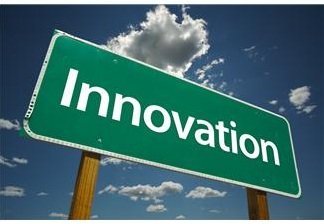 Organizations that have implemented ERP systems have long complained that deployments are too costly, time consuming and risky, so it is pretty rare that organizations look at ways to leverage enterprise software to drive innovation. Indeed, without the right expertise and guidance, ERP implementations can be difficult, even without the grand ambition of driving innovation. Case in point: our 2013 ERP Report confirms that most projects cost more than expected, take longer than expected and fail to deliver expected business benefits, while our organizational change and business process management report released last week reveals that most implementation challenges are related to people and business process issues – not technology.
Organizations that have implemented ERP systems have long complained that deployments are too costly, time consuming and risky, so it is pretty rare that organizations look at ways to leverage enterprise software to drive innovation. Indeed, without the right expertise and guidance, ERP implementations can be difficult, even without the grand ambition of driving innovation. Case in point: our 2013 ERP Report confirms that most projects cost more than expected, take longer than expected and fail to deliver expected business benefits, while our organizational change and business process management report released last week reveals that most implementation challenges are related to people and business process issues – not technology.
Given this backdrop, it’s no wonder that most organizations struggle with the basic blocking and tackling of ERP implementations, let alone finding ways to drive innovation. Part of this lies in the nature of ERP projects: most are driven by managers of back-office functions such as finance and accounting, which aren’t typically on the leading edge of technology. In addition, companies often bite off more than they can chew by trying to implement too much change in too little time, which undermines any hope of creating more innovative business processes.
But is it possible for ERP systems to drive innovation? Absolutely. Here are a few things to consider when determining how to best incorporate innovation into your ERP system environment:
Innovation starts with your implementation phasing strategy. If innovation is high on your list of expected business benefits, then make sure you phase your implementation in a way that gives you time to focus on more innovative business processes. Unrealistic timeframes are sure innovation killers since it forces the team into reactive mode rather than encouraging the team to focus on optimizing organizational creativity. Make sure that your rollout strategy takes an incremental approach to give the project team time to create better processes. This more incremental approach may mean phasing the rollout more granularly by geography, business process, software module or both.
Rethink business requirements definition and ERP software development. The traditional waterfall development approach to ERP implementations is not conducive to innovation, flexibility and responsiveness. Instead, this school of thought suggests a linear and sequential approach where requirements must be fully defined, the system fully tested and the organization fully trained before going live with the new ERP solution. Obviously, this approach has some merits, but it also affords less flexibility than a more nimble development approach similar to agile development. Even business startups are more commonly taking a less linear and more flexible approach to business planning than the traditional method of fully developing and testing a business concept before going to market. ERP implementation teams can learn from these playbooks to create environments that may not be perfect at go-live, but can more nimbly respond to potential innovations and improvements.
Consider post-implementation audits and ERP centers of excellence. One of the biggest problems with ERP systems has been that their implementation teams are so fatigued that they stumble across the “finish line” of go-live without thinking about how to use the system to continuously improve and innovate in the long-term. Post-implementation audits are one way to look at ways to optimize business processes and drive business results, as are ERP centers of excellence, which create the organizational skills and focus required to continuously improve and innovate long after the system has been implemented. We are seeing more of our clients take either or both of these approaches in recent years.
Acknowledge that ERP systems don’t create innovation on their own. ERP vendors will likely disagree but the technology on its own will not create innovation. Despite the sales hype about best practices, pre-configured solutions and accelerators, these industry myths will at best help make an implementation go smoother or faster. Technology will not create innovative business processes or foster a culture of innovation – only the organization and its leadership can do that. For this reason, it is imperative that organizations view ERP systems as one of a handful of potential enablers of innovation rather than a silver bullet to solve the business’s challenges.
The bottom line is that organizations need to be nimble and flexible when leveraging ERP systems to drive innovation, which may require implementation tactics that run counter to traditional thinking. This mode of thinking may require organizations to assess the tradeoff between a more adaptive and less perfect go-live versus the more structured approach designed to implement a solution that is somewhat frozen in time but perhaps more predictable at go-live. Each organization will come to its own conclusion and decide which tradeoffs are more important.
Learn more by downloading our 2013 ERP Report: Organizational Change and Business Process Management and attending our free webinar next week reviewing the report.